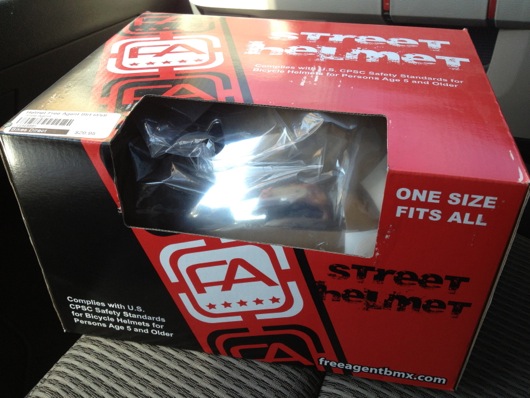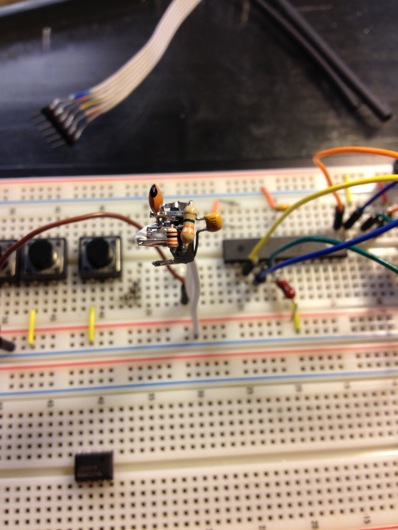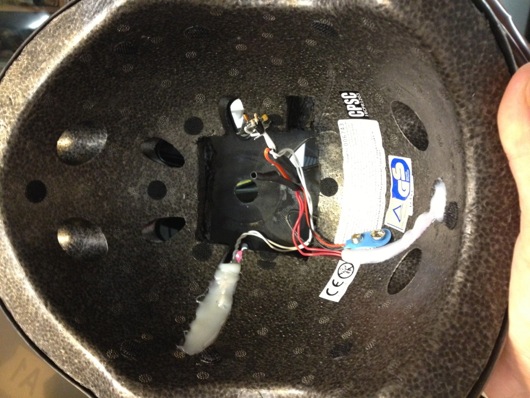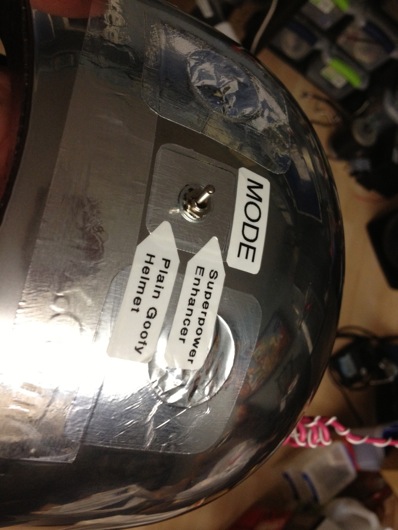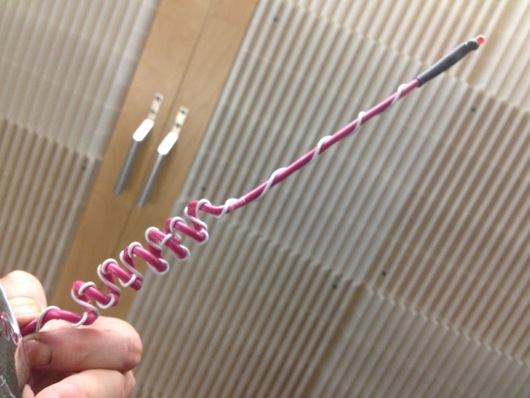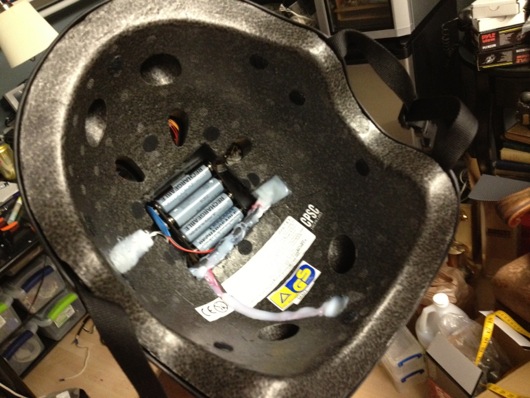This is the second in a series of three posts that talk about the props I built for my company's internal marketing plan launch for the employees (see previous post for back story). This particular post is about the HAT (Helmet for Accentuating Telepathy) and is our managing partner Justin's Interactive Superhero tool of choice. It allows his Techno Telepathy to reach farther than it would otherwise with the flick of a switch. The blinking LED on the end of the highly tuned antenna tells him his Techno Telepathy is sensing with ludicrous sensitivity. Er, something along those lines. The HAT started life as a simple chrome (plastic that looked like chrome) skateboarding helmet, which means you, too can build a HAT for accentuating your telepathy (if you imagine REALLY hard):
The main purpose of the HAT is to make Justin, one of meltmedia's partners, look like a dingbat (the plunger helps a little, as well):
The next thing to do was to make a blinky LED circuit. The cheap and easy way is to use a 555 timer IC, a couple of resistors and a couple of of capacitors:
I dead-bugged it to save time and to make it nice and compact, as I wanted to hot-glue it into the foam inside the helmet, like so:
I added a toggle switch to the outside of the helmet to allow Justin to turn off the telepathy accentuation feature and return the helmet to its normal state of being a plain old goofy helmet:
The antenna was a thick piece of electrical wire I had left over from my pool computer upgrade last summer. I wrapped a section of it around a pen, soldered one of the LED leads to it, then wrapped another thinner gauge wire up the thicker wire to provide ground to the LED (it's possible I had the polarity the other way, but you get the idea). I put a little heat-shrink tubing on it to better fixate the LED onto the end of the antenna:
The antenna and most every other thing attached to the helmet was held in place with crap-tonnes (the European measure of a crap-load) of hot glue (sorry for the blurry photo, BTW):
And, finally, a video to show it in action:

